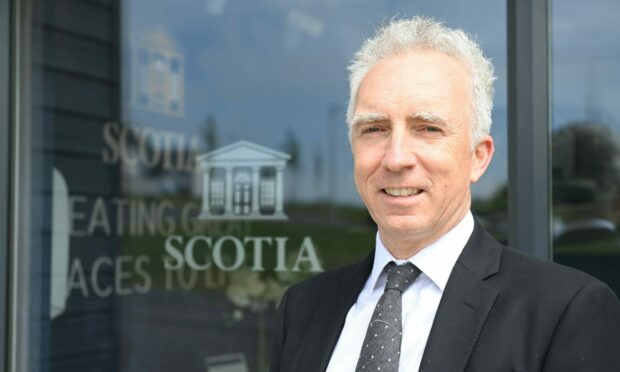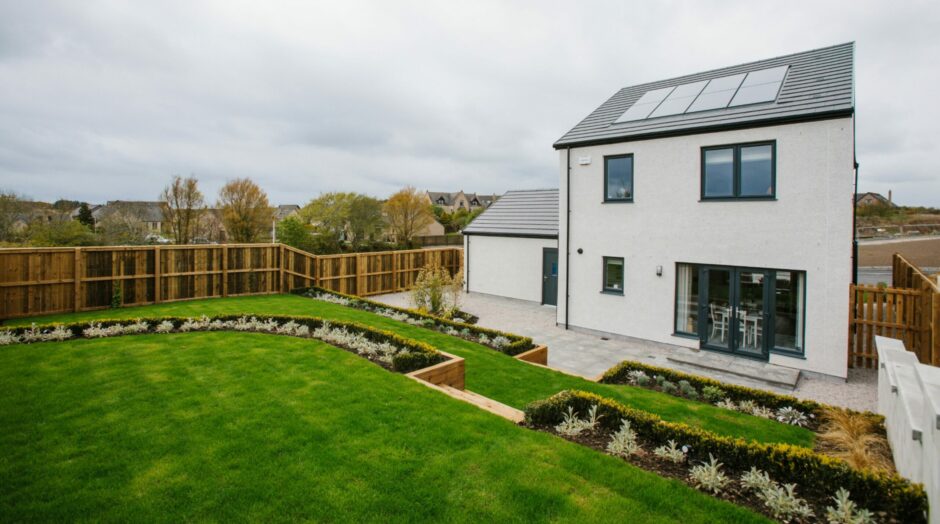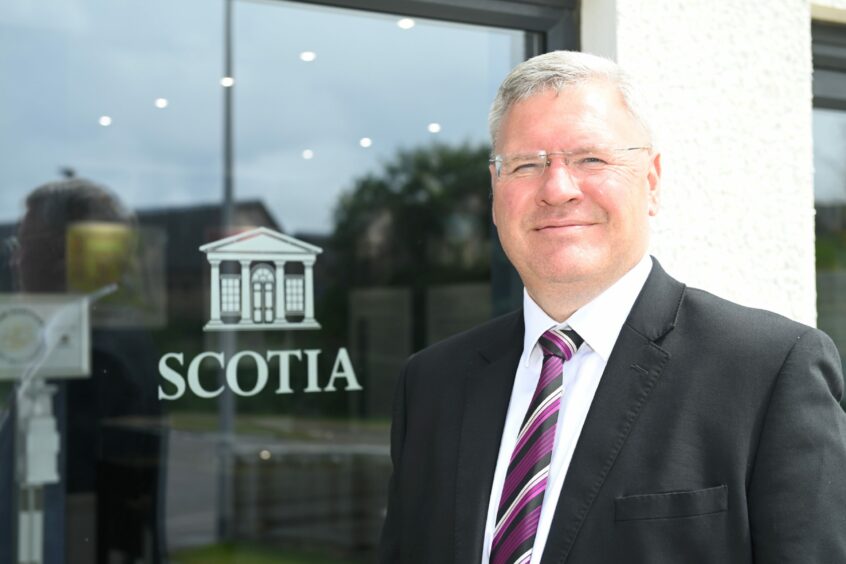The boss of Scotia Homes has hailed the north-east housebuilder’s latest annual results as “impressive” amid further signs of buoyancy in the market.
Martin Bruce, company’s managing director, said house price inflation was offsetting supply chain challenges and rising costs.
He also highlighted reduced demand for sales incentives after six years of falling prices.
Mr Bruce was speaking after Ellon-based Scotia filed its latest accounts at Companies House.
Back in the black
The firm made pre-tax profits of nearly £3.5 million in the year to June 30 2021.
This is compared with losses of £13.1m in the previous 14-month accounting period, when the business took a substantial hit from Covid lockdowns.
Results for 2019-20 were also impacted by a £13.6m write-down on the value of Scotia’s landbank and work-in-progress, against a backdrop of the pandemic and a collapse in oil prices.
Turnover for the latest period came in at £33.16m.
This was down from around £37m previously but Scotia said it reflected an underlying increase of 4% on an annualised basis.
And the company pointed to its pipeline of “exciting new developments” in Aberdeen city and shire, as well as the Highland and Tayside regions and St Andrews in Fife.
Chairman Gary Gerrard added: “Our board continues to monitor the changing economic landscape on a regular basis and we have been very encouraged by the rebound in demand across all our sites which is being sustained post year end.
“As we recover from the global pandemic, the business is targeting to double its current house build completions to 350 units per annum over the next three years.”
Mr Bruce, who founded Scotia in 1990, with his late father, Bill Bruce, said: “The impact of the Covid-19 pandemic has been unprecedented.
“The UK-wide lockdown in the spring of 2020 saw our whole business closed for almost three months and this hugely affected our trading performance for the period ended June 30 2020.
“The recovery in our 2021 results has been really impressive, with increased sales performance across all of our sites which have remained operational and Covid-safe throughout the period.”
‘Favourable market conditions’
The MD continued: “Despite the more favourable market conditions, the business has
faced huge challenges, with supply chain disruption leading to material availability shortages and cost increases at a level which the housebuilding industry has not seen for some considerable time.
“However, the buoyant housing market and the associated house price inflation which we are seeing across our developments has been sufficient to offset these additional costs – thereby protecting our gross margins.
“We are also seeing reducing demand for sales incentives – such as part-exchange, assisted sale, discounts, help-to-buy etcetera – to support sales levels.”
Scotia has current and future developments in Aberdeen, Arbroath, Aviemore, Ballater, Blairgowrie, Brechin, Braemar, Ellon, Forfar, Inverkeillor, Inverness, Kincraig,
Kintore, Laurencekirk, Nairn, Newburgh, Oldmeldrum, Perth, St Andrews and Tarves.
As we recover from the global pandemic, the business is targeting to double its current house build completions to 350 units per annum over the next three years.”
Gary Gerrard, chairman, Scotia Homes.
The company employed 164 people, on average, during the year to June 2021.
Scotia – previously controlled by the Bruce family – is now 95% owned by Camlin Group, a joint venture of property entrepreneurs Bruce Linton and David Cameron.
Mr Linton is the property entrepreneur behind Dundee-based James Keiller Holdings.
Mr Cameron has other property interests and is a director of Inverness Caledonian Thistle FC.
The joint venture acquired Scotia in May 2020 for an undisclosed sum.
Following the takeover by Camlin, Scotia has invested heavily in its landbank.
New development sites acquired are mainly in the Cairngorm National Park, Perthshire/Angus regions, as well as St Andrews.


